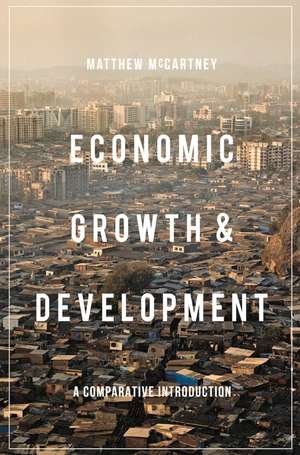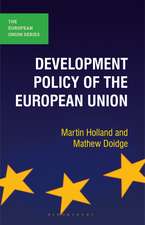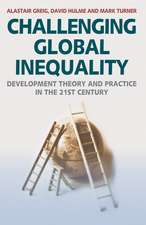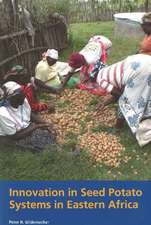Economic Growth and Development: A Comparative Introduction
Autor Matthew McCartneyen Limba Engleză Paperback – 25 mar 2015
| Toate formatele și edițiile | Preț | Express |
|---|---|---|
| Paperback (1) | 303.92 lei 3-5 săpt. | |
| Bloomsbury Publishing – 25 mar 2015 | 303.92 lei 3-5 săpt. | |
| Hardback (1) | 834.28 lei 6-8 săpt. | |
| Bloomsbury Publishing – 25 mar 2015 | 834.28 lei 6-8 săpt. |
Preț: 303.92 lei
Nou
Puncte Express: 456
Preț estimativ în valută:
58.16€ • 60.50$ • 48.02£
58.16€ • 60.50$ • 48.02£
Carte disponibilă
Livrare economică 22 martie-05 aprilie
Preluare comenzi: 021 569.72.76
Specificații
ISBN-13: 9781137290298
ISBN-10: 1137290293
Pagini: 352
Ilustrații: 15 figures, 20 black & white tables
Dimensiuni: 155 x 235 x 23 mm
Greutate: 0.64 kg
Ediția:2015
Editura: Bloomsbury Publishing
Colecția Red Globe Press
Locul publicării:London, United Kingdom
ISBN-10: 1137290293
Pagini: 352
Ilustrații: 15 figures, 20 black & white tables
Dimensiuni: 155 x 235 x 23 mm
Greutate: 0.64 kg
Ediția:2015
Editura: Bloomsbury Publishing
Colecția Red Globe Press
Locul publicării:London, United Kingdom
Caracteristici
Systematic use of economic theory throughout, suited to both economists and those new to the subject from a range of disciplines.
Notă biografică
Matthew McCartney is Director of the Contemporary South Asian Studies Programme and Associate Professor of the Political Economy and Human Development of India, University of Oxford, UK.
Cuprins
1. IntroductionPART I: THE PROXIMATE SOURCES OF GROWTH IN THE MODERN WORLD ECONOMY SINCE 19502. Thinking about Growth3. Growth in the Modern World Economy since 19504. Domestic and Foreign Direct Investment5. Population and Economic Growth/Development6. Technology and Economic Growth7. Education and HealthPART II: PATTERNS OF LONG-TERM ECONOMIC GROWTH AND THE DEEPER DETERMINANTS OF ECONOMIC GROWTH 'THE GREAT DIVERGENCE' SINCE 17508. Economic Growth and Economic Structure since 17509. Colonialism10. Institutions11. Geography and Economic Resources12. Culture13. International Trade, Openness and Integration14. Conclusion.















